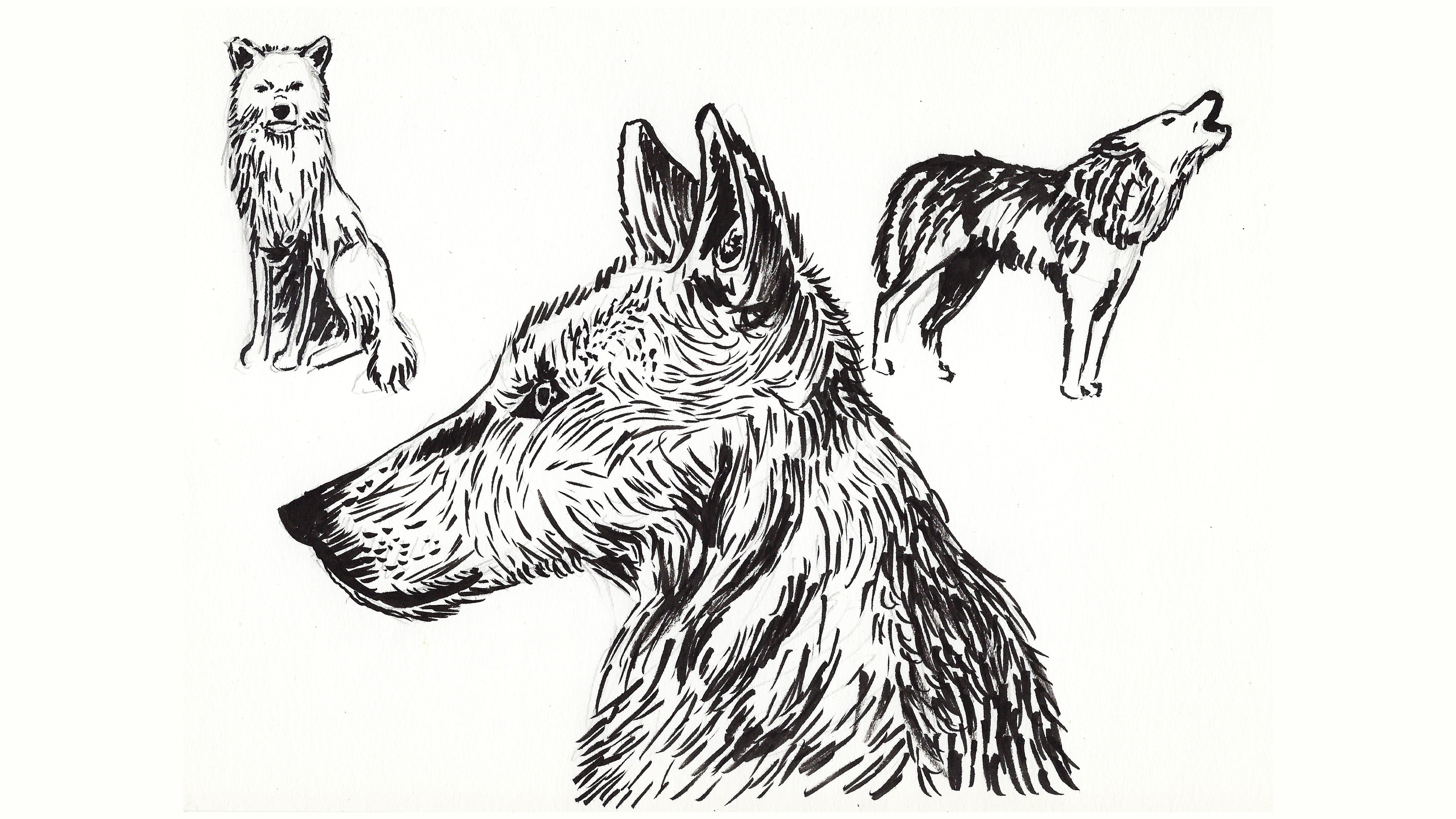I’m really enjoying Of Wolves and Men by Barry Lopez. This is a book about “the way that wolves and humans have interacted over centuries, and the way that the wolf has become so central to our thinking about animals.” I don’t know why I initially picked up a book about wolves, but I’m glad I did.
“The wolf’s coat is remarkable, a luxurious fur consisting of two layers: a soft, light-colored, dense underfur that lies beneath a covering of long guard hairs which shed moisture and keep the underfur dry. Much of the underfur and some of the guard hairs are shed in the spring and grow back in the fall. The coat is thick across the shoulders, where guard hairs may be four or five inches long, and thins out on the muzzle and legs. By placing muzzle and unprotected nose between the rear legs and overlapping the face with the thickly furred tail, wolves can turn their backs to the wind and sleep comfortably in the open at forty degrees below zero.”
Aside from it just being an awesome read, there are a couple of themes that illustrate the mystery and wonder of nature in the way you would expect from any great nonfiction book with animals as its subject. The first is that humans can only see the behavior of animals (and anything in the natural world) in terms of how we behave (e.g. militaristic, tribal, etc), which, the author rightly asserts, is often a mistake. The second is that despite all our cleverness and technology, we still don’t really know much about most things to do with nature, let alone the wolf.
“Let’s say there are 8,000 wolves in Alaska. Multiplying by 365, that’s about 3 million wolf-days of activity a year. Researchers may see something like 75 different wolves over a period of 25 or 30 hours. That’s about 90 wolf-days. Observed behavior amounts to about three one-thousandths of 1 percent of wolf behavior. The deductions made from such observations represent good guesses, and indicate how incomplete is our sense of worlds outside our own.”
I find these themes both comforting and humbling; they make the subject at hand all the more interesting.
“in the past, it was assumed that wolves were basely motivated and bloodthirsty; then in an environmentally enlightened age, it was suddenly assumed that they were noble and wise. So, too, have we analyzed their hunting behavior in human terms, and none of it is worth more than the metaphor it’s couched in. This habit indeed may eventually lead us even further from an understanding of the animal. For my own part, I mean to suggest that there is more to a wolf hunt than killing. And that wolves are wolves, not men.“
While I’ve been reading I also came across this video, which gets at just how hard it is to really “know” what wolves are up to:
“Wolves vary their hunting techniques, share food with the old who do not hunt, and give gifts to each other. They can live for a week without food and travel twenty miles without breaking stride. They have three systems of communication—vocal, postural, and olfactory. Their pelages range from slate blue to almost pure white, through chocolate brown, ocher, cinnamon, gray, and blond. And like primates they spend a good part of their time with their young and playing with each other. I once saw a wolf on the tundra winging a piece of caribou hide around like a Frisbee for an hour by himself.”
I’m a fan of the wolf.








Comments welcome!